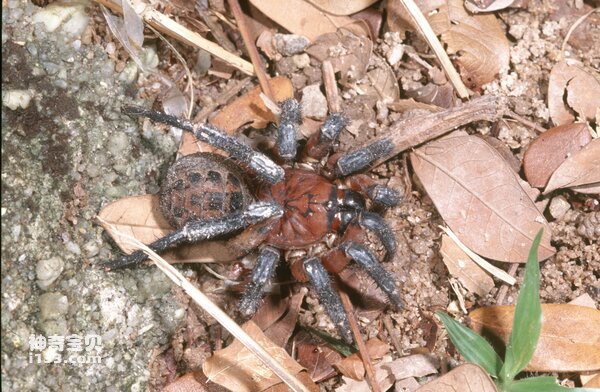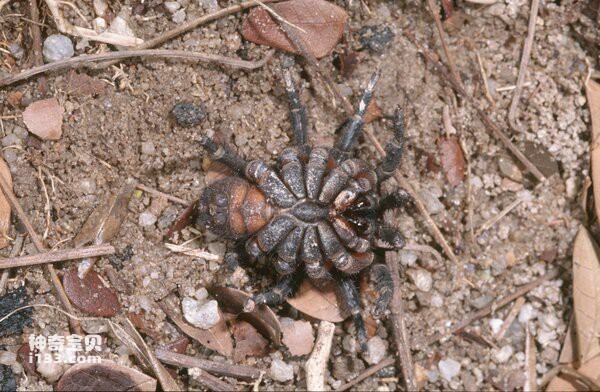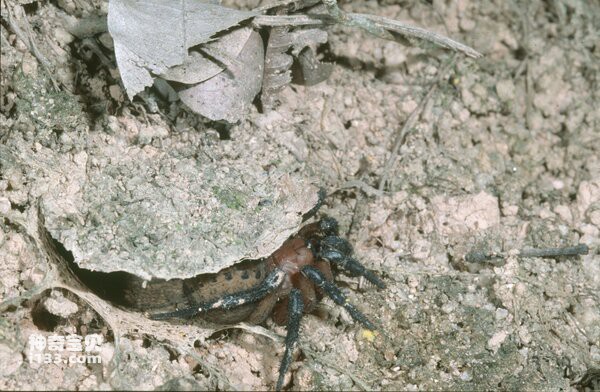Spiders were among the first animals to live on land, probably evolving around 400 million years ago.
Spiders may have evolved about 400 million years ago from thick-waisted arachnid ancestors that lived in the water for a short time. The first unambiguous spiders were slender-waisted arachnids with abdominal segments and the ability to spin silk, known from fossils such as Attercopus fimbriungus. This spider lived 380 million years ago during the Devonian period, 150 million years before the dinosaurs.

Most early segmented spider fossils belong to the mesotheliids, a group of primitive spiders whose spinnerets were located below the middle of the abdomen (rather than at the end of the abdomen as in "modern" spiders). They were probably ground-dwelling predators that lived in the massive stone pine and fern forests of the middle to late Paleozoic era, where they may have been prey to other primitive arthropods such as cockroaches, giant silverfish, plate beetles, and millipedes. Eater. The silk may simply have been used as a protective covering for eggs, a lining for retreat holes, and later perhaps in simple ground netting and trapdoor structures.
As plant and insect life diversified, so did spiders' use of silk. Spiders with spinnerets at the end of their abdomens (Metaarachnida) appeared more than 250 million years ago and may have contributed to the development of more complex sheet and labyrinth webs for capturing prey on the ground and leaves, as well as the use of safety draglines. develop.

By the Jurassic Period (191 - 136 million years ago), when dinosaurs roamed the Earth, the complex aerial webs of orb spiders had developed to capture rapidly diversifying swarms of flying insects. Likewise, diversification of hunting spiders into litter, bark, and leaf niches will progress with new prey capture and habitat opportunities.
Despite this, the spider fossil record is relatively poor. During the Tertiary period, the rich record of spider fossils in amber (intact spiders trapped in clear, sticky tree resin) shows us that arachnid fauna that was essentially similar to today's arachnid fauna evolved 30 million years ago. existed.

Living Fossil
Surprisingly, segmented mesothelial spiders survived in East Asia (China to Indonesia) from the late Paleozoic. These huge and impressive spiders live in soil burrows with trap doors in forested areas and caves. Segmented spiders are very similar to their ancestors and have few changes. They are not found in Australia.
The biggest “spider” ever?
A 300-million-year-old, half-meter-long arachnid fossil, Megarachne servinei, was originally described as a spider but is now considered more likely to represent another ancient spider-like arachnid. Its unique features include its massive size, huge shovel-like jaws, and a ribbed shield-like covering on its abdomen. Spiders of this size must have fed on large prey such as cockroaches and giant millipedes. But why would such a giant predator need such an impressively armored body - and are there even bigger spider predators around?
animal tags: spider
We created this article in conjunction with AI technology, then made sure it was fact-checked and edited by a Animals Top editor.